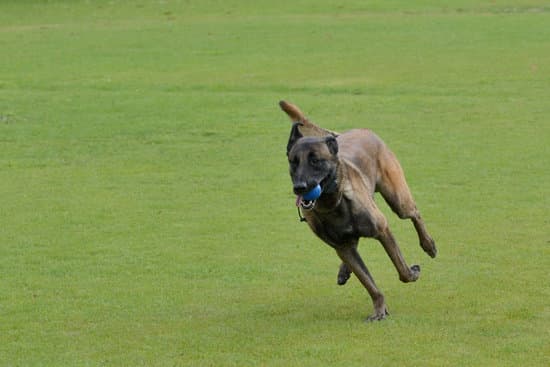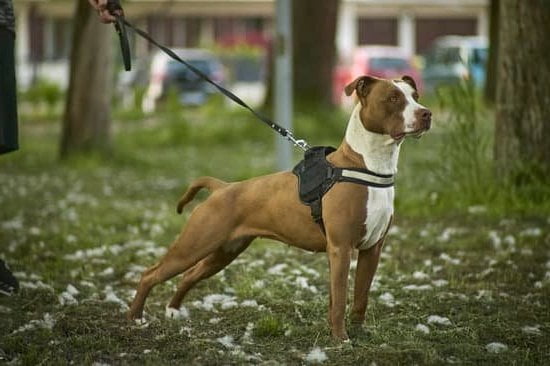Are you struggling with how to train your dog? Training your pup is an essential part of being a responsible pet owner and ensuring the safety and happiness of your furry companion.
Many pet owners underestimate the importance of proper training, but it can make all the difference in creating a well-behaved and obedient dog. In this article, we will explore the various aspects of dog training, from choosing the right method to addressing behavioral issues and teaching advanced commands.
When it comes to training your dog, there are several key factors to consider. The first step is understanding the significance of dog training and why it is crucial for the overall well-being of your pet. Dog training not only teaches basic commands but also helps address behavioral issues and strengthens the bond between you and your furry friend. Learning how to train your dog effectively can lead to a more harmonious and fulfilling relationship with your canine companion.
Choosing the right training method is another important aspect of dog training. Positive reinforcement has become increasingly popular for its effectiveness in promoting good behavior, while traditional training methods also have their own merits.
Understanding the differences between these approaches and determining which one suits your dog’s personality is critical in achieving successful results. In addition, consistent training schedules, basic commands, addressing behavioral issues, using appropriate tools and equipment, as well as specific activity-based training are all vital components in successful canine instruction.
Choosing the Right Training Method
Positive reinforcement and traditional training are two different approaches to dog training, each with its own set of principles and techniques. Positive reinforcement focuses on rewarding desired behaviors, while traditional training may involve using corrective actions to eliminate unwanted behaviors.
When choosing the right training method for your dog, it’s important to consider their individual temperament and personality. Positive reinforcement is often preferred by many dog trainers and behaviorists because it relies on the use of rewards such as treats, praise, or toys to encourage good behavior. This method creates a positive association between obeying commands and receiving rewards, making the learning process enjoyable for the dog.
On the other hand, traditional training methods may involve the use of corrective tools such as choke collars or leash corrections to discourage unwanted behaviors. While some dogs may respond well to this type of training, others may become fearful or anxious, leading to negative side effects in their behavior.
Ultimately, both positive reinforcement and traditional training have their pros and cons. The choice between these methods should be based on what works best for your individual dog, taking into account their breed, age, temperament, and any existing behavioral issues they may have. It’s also important to seek guidance from a professional dog trainer or behaviorist if you are unsure about which method would be most effective for your pet.
| Training Method | Pros and Cons |
|---|---|
| Positive Reinforcement | Focuses on rewarding desired behaviors; Creates a positive association with obedience; Enjoyable for the dog |
| Traditional Training | Might involve corrective tools; Some dogs may respond negatively; Can lead to fear or anxiety in dogs |
Setting Up a Training Schedule
Creating a Routine
One of the most important aspects of training your dog is consistency. Dogs thrive on routine and structure, so it’s crucial to establish a consistent training schedule. This means setting aside specific times each day for training sessions, keeping them relatively short but frequent. By doing this, you are creating a predictable environment for your dog, which can help them learn more effectively.
Training Sessions
When setting up your training schedule, it’s essential to consider the timing of your training sessions. It’s best to conduct these sessions when your dog is alert and focused, such as after they’ve had some exercise or playtime and are not too hungry or tired. These optimal conditions will ensure that your dog is receptive to learning and can retain the information you are teaching them.
Adapting to Your Dog’s Needs
While it’s important to maintain a consistent schedule, it’s also crucial to be adaptable and responsive to your dog’s individual needs. If you notice that your dog becomes easily distracted during a particular time of day or is struggling with a certain command, don’t be afraid to make adjustments to the training schedule as needed. Understanding and accommodating your dog’s unique learning style will ultimately lead to more successful training sessions.
By implementing a well-thought-out and consistent training schedule, you are laying the foundation for effective communication between you and your canine companion. This structured approach not only helps in teaching basic commands but also plays a significant role in addressing behavioral issues and preparing for advanced training techniques. Remember that patience and positive reinforcement go hand in hand with consistency when it comes to successful dog training.
Basic Commands
Training your dog to obey basic commands is essential for their safety and well-being. Teaching your dog to sit, stay, come, and heel can prevent them from running into dangerous situations and can make your interactions with them more enjoyable.
To start training your dog to sit, hold a treat close to their nose and then slowly move your hand up. This will cause their head to follow the treat, making their bottom go down. Once they are in the sitting position, give the command “sit” and then reward them with the treat. Repeat this process several times a day until they respond consistently to the “sit” command.
For the “stay” command, start by having your dog sit. Then show them the palm of your hand while giving the verbal cue “stay.” Gradually increase the time between treats so that they learn to stay in place for longer periods of time. Reward them when they successfully stay where you’ve asked them to.
When teaching your dog to come when called, make sure you use a happy and encouraging tone of voice. Begin in a low-distraction area such as inside your home or in a fenced yard. Call their name followed by the command “come,” then reward them generously when they obey.
Lastly, training your dog to heel involves teaching them to walk closely beside you without pulling on the leash. Using treats as positive reinforcement can help accomplish this task more effectively.
Overall, consistency is key when training basic commands with your dog. With patience and practice, these essential commands can become reliable behaviors that enhance both of your lives together.
| Basic Command | Training Method |
|---|---|
| Sit | Reward-based training with treats |
| Stay | Gradual increases in time between treats |
| Come | Encouraging tone of voice and rewards |
Addressing Behavioral Issues
When it comes to addressing behavioral issues in dogs, it’s important to understand the reasons behind their actions. Barking, jumping, and digging are common behaviors that can be frustrating for dog owners, but they can often be corrected with the right approach. Here are some strategies for addressing these behavioral issues:
- Barking: One of the most common behavioral issues in dogs is excessive barking. To address this behavior, it’s important to first identify the cause of the barking. Is your dog barking out of boredom, fear, or in response to something specific? Once you understand the root cause, you can work on training techniques to reduce excessive barking.
- Jumping: Many dogs have a tendency to jump on people as a form of greeting or excitement. While this behavior may seem harmless, it can be disruptive and even dangerous if the dog jumps on small children or elderly individuals. Training your dog to greet people calmly and reinforcing positive behavior when all four paws are on the ground is key to addressing jumping.
- Digging: Dogs often dig out of instinctual behavior such as seeking comfort or fun, or out of boredom or anxiety. Providing mental and physical stimulation through toys and playtime can help reduce digging behavior. Additionally, creating designated digging areas in your yard can also encourage your dog to focus their digging in specific spots.
By identifying the root causes of these behaviors and using positive reinforcement techniques, you can effectively address barking, jumping, and digging in your dog. Remember that consistency is key when working on behavioral issues, and patience is essential as you work with your furry companion to modify their behavior.
Training Tools and Equipment
Leashes
Choosing the right leash for your dog is important to ensure their safety and control during training sessions. A standard 6-foot leash is commonly used for basic training, providing enough space for the dog to explore while still maintaining control. Retractable leashes can be useful for teaching commands that involve distance, but should be used with caution as they can lead to lack of control in certain situations.
Collars
There are various types of collars available for different training needs. A traditional buckle collar or flat collar is suitable for most dogs and is used for attaching identification tags and securing the leash. Martingale collars are a good option for dogs who tend to slip out of regular collars, while head halters and harnesses offer additional control over strong or unruly dogs.
Treats
Using treats as positive reinforcement during training sessions can be highly effective in motivating your dog to learn new behaviors. It is important to choose high-quality, small-sized treats that are both tasty and easy to eat quickly. When using treats, it’s essential to reduce the size of your dog’s regular meals to avoid overfeeding them during training sessions.
By understanding how to properly use leashes, collars, and treats during training, you can create a positive learning environment for your dog and strengthen the bond between you and your pet. Remember that consistency, patience, and positive reinforcement are key factors in successful dog training.
Training for Specific Activities
Agility training involves teaching your dog to navigate an obstacle course with speed and precision. This type of training not only provides physical exercise but also mental stimulation for your dog. Obedience training, on the other hand, focuses on teaching your dog to follow basic commands such as sit, stay, come, and heel. It helps establish a strong bond between you and your dog while ensuring their safety and good behavior in various situations.
Socialization training is vital for ensuring that your dog can interact positively with other dogs and people. It involves exposing your dog to different environments, sounds, smells, and experiences from an early age to help them become well-adjusted and confident around others.
When training for these specific activities, it’s important to use positive reinforcement techniques to encourage good behavior. Patience, consistency, and plenty of praise are key elements in ensuring your dog learns these new skills effectively. Additionally, seeking professional guidance or joining a training club specializing in these activities can provide valuable support and resources for both you and your furry friend.
Advanced Training Techniques
Teaching tricks and advanced commands to your dog can be a fun and rewarding experience for both you and your furry friend. It not only strengthens the bond between you and your pet but also provides mental stimulation for the dog. Before delving into advanced training, it is essential to ensure that your dog has mastered basic commands such as sit, stay, come, and heel. Once these fundamentals are in place, you can start introducing more complex tasks.
One of the most important aspects of teaching tricks and advanced commands is patience. Dogs, like humans, learn at their own pace, so it’s crucial to remain patient and persistent throughout the process. It’s also important to use positive reinforcement techniques such as praise, treats, or playtime as rewards for good behavior. This will encourage your dog to continue learning and performing new tricks.
When teaching advanced commands, start with one new command at a time. Be consistent with your training schedule and practice the command in various environments to ensure that your dog generalizes the behavior. Additionally, consider enrolling in a specialized training class or seeking advice from professional trainers if you encounter any difficulties during the training process. Remember that every dog is different and may require individualized training methods tailored to their specific needs and abilities.
Conclusion
In conclusion, dog training is a crucial aspect of responsible pet ownership. By investing time and effort into training your dog, you are not only improving their behavior, but also strengthening the bond between you and your furry friend. It is important to remember that patience and positive reinforcement are key components of successful dog training.
Choosing the right training method is essential to ensure that your dog responds well to the training. Positive reinforcement has been proven to be effective in promoting good behavior in dogs, and it fosters a strong and trusting relationship between pet and owner. By rewarding desired behaviors with treats, praise, or toys, you are encouraging your dog to repeat those actions in the future.
Consistency is also crucial when it comes to training your dog. Setting up a regular training schedule and sticking to it will help reinforce what your dog has learned. This will also assist in addressing behavioral issues such as barking, jumping, digging, and other unwanted behaviors. With patience and persistence, these issues can be effectively managed through proper training techniques.
In summary, while training a dog may require time and effort, the benefits are well worth it. By utilizing positive reinforcement methods, maintaining consistency in training schedules, addressing behavioral issues effectively, and using the appropriate tools and equipment, you can ensure that both you and your beloved canine companion have an enjoyable and harmonious relationship. So remember to be patient with your pup throughout the process – after all, good things come to those who wait.
Frequently Asked Questions
How Do I Train My Dog Myself?
Training your dog yourself requires patience, consistency, and positive reinforcement. Start by teaching basic commands like sit, stay, and come using rewards like treats or praise. Use clear, consistent cues and practice regularly in short sessions to keep your dog engaged and focused. It’s important to remain calm and assertive during training to establish yourself as the pack leader.
What Are the 5 Golden Rules of Dog Training?
The 5 golden rules of dog training are based on positive reinforcement: be patient, set realistic expectations, use consistent cues and timing, provide plenty of exercise and mental stimulation, and always end on a positive note. By following these rules, you can create a strong bond with your dog built on trust and understanding.
What Is the First Thing to Train a Dog?
The first thing to train a dog is to establish good behavior habits through socialization and basic obedience training. Socialization helps your dog become well-adjusted to different people, animals, and environments.
Basic obedience training teaches your dog how to understand and respond to simple commands like sit, stay, and come. These foundational skills will set the stage for more advanced training later on.

Welcome to the blog! I am a professional dog trainer and have been working with dogs for many years. In this blog, I will be discussing various topics related to dog training, including tips, tricks, and advice. I hope you find this information helpful and informative. Thanks for reading!





